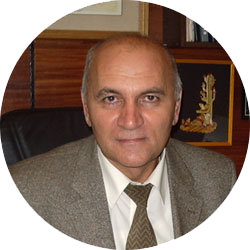Electrochemical reactors – devices for electrochemical exposure of water and aqueous electrolyte solutions. For electrochemical conversion of water and dissolved substances it contains, flow-through diaphragm modular electrochemical reactors – FEM modules – are used, which can be employed as independent electrochemical devices, as well as in the form of higher capacity units called RPE reactors.
The main distinctive features of FEM modules are the combination in one cell of ideal displacement reactor and ideal mixing reactor properties, diaphragm’s resistance to various kinds of dirtying, possibility of operation under considerable diaphragm differential pressure, as well as possibility of efficient control over the process of electrochemical treatment of water and electrolyte solutions by regulating, on a large scale, artificially induced ion-selective conductivity of ceramic oxide-zirconium diaphragm. Another distinctive feature of FEM modules is their high performance indicators during operation both with fresh water or low-mineralized solutions, and with concentrated electrolyte solutions.
Special resistance of engineering materials, optimal design and modular configuration make it possible to use FEM modules not only for electrochemical water activation but also for commercial production of hydrogen, oxygen, chlorine, chlorine dioxide, sodium hypochlorite and alkali. When working with concentrated saline solutions, FEM modules’ advantage over industrial diaphragm or membrane electrolyzers is their capability of providing a final consumer with necessary products (chlorine, chlorine dioxide, hydrochloric acid, caustic soda, sodium hypochlorite, potassium hypochlorite, hypochlorous acid) synthesized on-site in required amounts in compact-size economical devices, with comparatively modest requirements to the purity of source solutions and minimal labor, time and material inputs.
